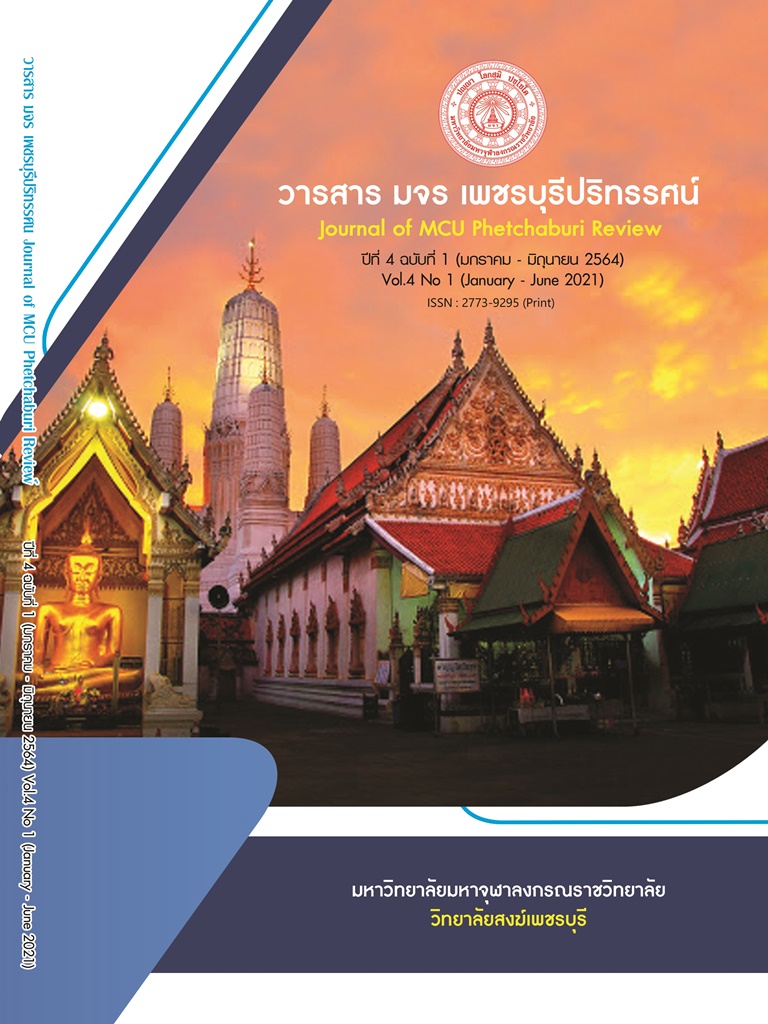DIKIR HULU: THE HERITAGE OF PERFORMING ARTS. CASE STUDY OF BAAN DOO KU COMMUNITY, BACHO SUB-DISTRICT, BACHO DISTRICT, NARATHIWAT PROVINCE
Main Article Content
Abstract
The objectives of this article were to study the components of Dikir Hulu. And to learn the method of inheritance of Dikir Hulu, Ban Dooku Community, Ba Cho Sub-district, Ba Cho District, Narathiwat Province. It is qualitative research. The key informants were two groups of people related to Dikir Hulu in Ban Du Ku District, Ba Cho Sub-district, Ba Cho District, Narathiwat Province, group 1, 11 key informants, and group 2, 5 secondary informants. Specific selection Interviews and non-participant observations were used to explore the data. Field data collection by content analysis The results of the research were as follows: 1) The composition of the Dikir Hulu in the Ban Doo Ku community was found to consist of: 1.1) performers who performed the performances, 1.2) couples who performed music and teams who performed hand dances. 1.3) the instruments used in the music performance, 1.4) the songs used for singing to complete the performance, and 1.5) the costumes of the Dikir Hulu that can enhance the color of the performances; 2) the method of inheriting the Dikir Hulu, Ban Dooku Community 2.1) Cultural collection The accumulation of culture must come from the older generation collecting musical instruments or equipment, dress, music, and singing techniques. For future generations to learn. 2.2) In terms of cultural succession, Bring the Hulu troupe to school and show them to the younger generation. For the new generation to see the value of a good culture, it brings culture to improve to match the current era. make the show exciting and bring the culture in the community to spread abroad.
Article Details

This work is licensed under a Creative Commons Attribution-NonCommercial-NoDerivatives 4.0 International License.
References
ชนาวี ดลรุ้ง และคณะ. (2560). การสืบทอดมรดกทางวัฒนธรรมบุญสงกรานต์ เพื่อพัฒนาการศึกษาตามแนวชายแดนไทย-กัมพูชา. วารสารชุมชนวิจัย, 1(3), 95-109.
ณัฎฐาพร หอมแช่ม. (2548). ลิเกฮูลู:กรณีศึกษาคณะอาเนาะป อุมาร์ อาเนาะปูยู อำเภอแม่ลาน จังหวัดปัตตานี. ใน (วิทยานิพนธ์ศิลปกรรมศาสตรมหาบัณฑิต สาขาวิชามานุษยดุริยางควิทยา). บัณฑิตวิทยาลัย. มหาวิทยาลัยศรีนครินทรวิโรฒ.
ทะนงศักดิ์ วิกุล. (2547). การศึกษาการรับรู้ของชุมชนต่อคุณค่ามรดกทางวัฒนธรรมในเขตเมืองกรณีศึกษา เขตเทศบาลนครลําปาง. กรุงเทพมหานคร: สถาบันเทคโนโลยีพระจอมเกล้าเจ้าคุณทหารลาดกระบัง.
เปรมสิรี ศักดิ์สูง และคณะ. (2550). ลิเกฮูล: การศึกษาเชิงประวัติรูปแบบและการพัฒนาศักยภาพ. ใน (รายงานการวิจัย). สำนักงานคณะกรรมการแห่งชาติ กระทรวง วัฒนธรรม.
พลอยภัทรา ตระกูลทองเจริญ. (2557). การศึกษาความตระหนักในการอนุรักษ์มรดกทางวัฒนธรรม ผ่านกระบวนการการมีส่วนร่วมกรณีศึกษา: หมู่บ้านศาลาแดงเหนือ เชียงรากน้อย. ใน (วิทยานิพนธ์สถาปัตยกรรมศาสตร์มหาบัณฑิต สาขาวิชาสถาปัตยกรรมภาย). บัณฑิตวิทยาลัย. มหาวิทยาลัยกรุงเทพ.
พิณทิพย์ ขาวปลื้ม. (2556). การสืบทอดวัฒนธรรมปี่พาทย์มอญใน อำเภอปากเกร็ด จังหวัดนนทบุรี. ใน (วิทยานิพนธ์ศิลปกรรมศาสตร์มหาบัณฑิต สาขาวิชามานุษยดุริยางควิทยา). บัณฑิตวิทยาลัย. มหาวิทยาลัยศรีนครินทรวิโรฒ.
ยะพา เจะนิ และคณะ. (2557). บทบาทเพลงพื้นบ้านดิเกร์ฮูลูในการเสริมสร้างสันติสุขในสามจังหวัดชายแดนภาคใต้. ใน (รายงานการวิจัย). มหาวิทยาลัยราชภัฏยะลา.
สรรเกียรติ กุลเจริญ. (2558). การเปลี่ยนแปลงของวัฒนธรรมท้องถิ่น: ศึกษากรณีงานประเพณีสงกรานต์พระประแดง อำเภอพระประแดง จังหวัดสมุทรปราการ. ใน (ดุษฎีนิพนธ์ปรัชญาดุษฎีบัณฑิต สาขาวิชาไทย). บัณฑิตวิทยาลัย. มหาวิทยาลัยบูรพา.
สุธี เทพสุทริวงค์. (2546). วิถีและพลังของลิเกฮูลูในจังหวัดปัตตานีปัตตานี. ใน (รายงานการวิจัย). มหาวิทยาลัยสงขลานครินทร์ วิทยาเขตปัตตานี.
อ้อมดาว ลอยสุวรรณ. (2559). บทบาทของดิเกร์ฮูลูต่อการพัฒนาในจังหวัดยะลา. ใน (วิทยานิพนธ์วารสารศาสตรมหาบัณฑิต สาขาวิชาสื่อสารมวลชน). บัณฑิตวิทยาลัย. มหาวิทยาลัย ธรรมศาสตร์.
อุษณีย์ ธุวโชติ และคณะ. (2556). วัฒนธรรมอาหารไทย: ภาคใต้. นนทบุรี : สำนักงานกิจการโรงพิมพ์องค์การสงเคราะห์ทหาผ่านศึกในพระบรมราชูปถัมภ์.


